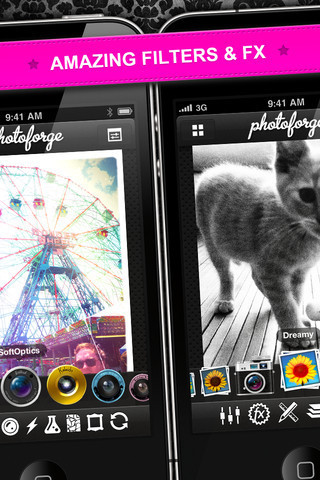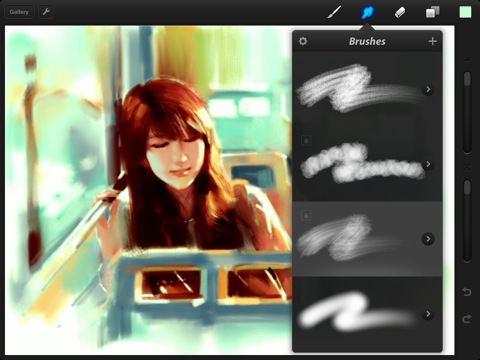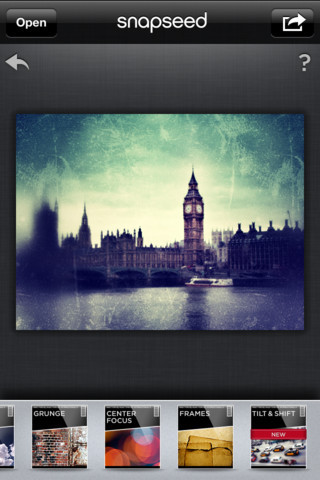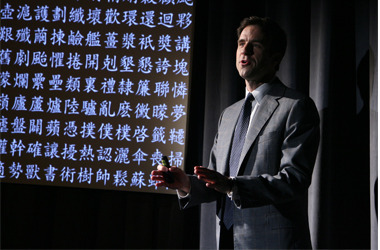Nancy Duarte's Blog, page 30
January 16, 2012
In Honor of MLK

To honor one of one of the greatest communicators of all time, we'd like to re-post a popular blog from last year: The analysis of Rev. Dr. Martin Luther King Jr.'s speech from the March on Washington.
MLK's "I Have a Dream" speech is not only literarily brilliant, its structure follows the presentation form perfectly, by traversing back and forth between what is and what could be, and ending by describing what the new bliss of equality looks like. In addition, MLK carefully chooses phrases and metaphors that resonate deeply with his audience.
If you're struggling to create your next big presentation or even just crafting the message for your next staff meeting, take a few minutes to be inspired by the brilliance of one of America's most beloved orators. Thank you, Dr. King, for standing up and speaking out to change the world.






January 11, 2012
Interview with Olivia Mitchell

Recently I had a chance to sit down with Olivia Mitchell, the sole blogger for Speaking About Presenting, and one half of the presentation coaching team at Effective Speaking, based in Wellington, New Zealand.
I know you struggled as a presenter for a long time. Can you talk a little bit about what that journey has been like to transform yourself?
Olivia: My presenting journey started at least 25 years ago. I was just totally shy, not wanting to even speak up in a meeting. Speaking in front of a group? Forget about it. I just didn't want to do that stuff. But, I also realized that if I wanted to get ahead in my career—at that point I was a lawyer for a government department—I needed to get better at speaking—just speaking up, not necessarily speaking in front of a group. So, I joined Toastmasters. I had some pretty frightening experiences at first. I would get really freaked out. My legs would feel like noodles, my heart felt like it was going to explode. I would just get through it, sit down again, and wait until the shaking subsided. It was not a pleasant experience. But, Toastmasters was a really supportive environment and I just kept going. Even when I had bad experiences, I would just keep coming back and gradually I built confidence in myself.
Although, now I would say I learned how to build my confidence by repeated exposure—just speaking, and speaking, and speaking. I think there are shortcuts to that. One of the things that we teach on our courses, which I talk about in my blog, is using the principles of cognitive behavioral therapy to help people with the fear of public speaking.
How do you implement cognitive behavioral therapy into your speaker coaching?
Olivia: By looking at the self-talk you have about speaking. Before I would get up to speak, I'd think 'I must not look nervous. I want everyone to really think of me as confident and credible.' But of course, then I'd be holding onto my notes and my hand would be shaking, and the notes would shake. I'd have a little drama in my head. Luckily I would keep it inside my head. That little drama in my head: Oh my God! They can see I'm nervous. This is just awful. I just want to get through this presentation.
Those thoughts create a vicious cycle that just makes you more and more nervous. What I've learned since then—and I wish I knew 20 years ago—is how to monitor my self talk, to be aware of where I'm putting irrational pressure on myself. This can still happen to me now, with a high-stakes presentation, or something I've been working on for a really long time and I want to nail. I'd be saying to myself, 'I've really got to get this one right. This is critical if I don't get this right. It's going to be a disaster.'
Do you think that negative self talk makes the audience seem more threatening?
Olivia: Yes, by raising the stakes so high, and putting so much pressure on yourself. From a sporting terminology here, I don't know if you have this here, but in New Zealand we would call that 'choking.' You're putting so much pressure on yourself, you can't perform. If I realize that I'm getting into that mode, I'll say, 'Okay, this is not so useful. What am I really trying to achieve here? What is critical and what is not? I want to do my best, I still have a goal of how I want to perform, but I'm not going to beat myself up if I make some mistakes.'
I think your approach is different than most of the other consultants and coaches out there. How is your methodology different?
Olivia: One of the differences is that I recognize that nervousness is a factor, anxiety is a factor, but I think too many coaches pay lip service to that. They'll say things to people, which are counter-productive. For instance, it might be, "You've got to do it this way, you've got to do it that way. If you have a mannerism which makes you look less credible, that's awful. We've got to fix that." They talk in absolute language and very nit-picky language. They are right in terms of what they want to achieve, but I think their approach is not so useful in helping the client develop a way of managing their anxiety. I try to help them manage their anxiety. If I help them manage their anxiety, a lot of the other stuff will become right as a result.
How do you see the components of a great presentation coming together?
Olivia: The major components I would say are content, delivery, and the visuals. By visuals, I'm talking particularly about slides. I see content as the major leg of the stool. The others are important, and of course either of them can sabotage the content. For instance, if somebody is really monotone in their delivery, or they've got a lot of um-ing, or if the slides are really full of bullet points and they're sending everybody to sleep, and you're just reading from the slides, it's not going to work. I see the content as being like the base building block, and the other two can either sabotage it or enhance it. That's the way I see it coming together.
You work with your husband. How do you make that work?
Olivia: It's not difficult for us. We have different styles in terms of presenting. The major thing that we do on a weekly basis is run training courses. We're running one and two day training courses. We've never worked out who does how many minutes of what, but it's roughly equal. We have different styles. He's the more natural extrovert—the funny guy, the spontaneous one. He's likely to wing it; sometimes he gets himself into trouble. I'm the more measured one; I like to be quite succinct. I like to keep things on time.
What's your favorite part of your job?
Olivia: For me it is helping the people who are scared, but have got something really useful to say, who've got something they want to share with the world. I think you call it "putting a dent in the universe." It's sad. I love helping people who have been scared about putting their dent in the universe, so they can speak up and share their message with people. When we run a course, we might have six people come in on the first day—they're like scared little rabbits, and they don't want to speak up. Over the two days we gradually build them up. We start things really soft and easy so they get used to us and the other people in the course. Gradually they get stretched and pushed a little bit if they need it, and also they're given the psychological tools to manage how they feel. By the end of the second day they say, "Yay, I'm looking forward to my next presentation!"
When I hear somebody say "I'm actually looking forward to my next presentation. I never imagined that I'd ever look forward to a presentation!' I think, Yay!
Thanks to Olivia for taking time to chat with me! Hope you find her story as inspiring as I do.






January 3, 2012
10 Mobile Apps for Highly Creative People

With an increasing number of mobile design options emerging by the day, creative people are finding new and powerful ways to flesh out their visual concepts while on the move. The era of the mobile studio is upon us, so we thought we'd share a handful of brilliant apps to help you capture your inspiration whenever–and wherever–it may strike you.
Adobe Ideas
A vector app for iOS and Android that lets you finger paint and sketch. In addition, It works seamlessly with the desktop versions of Illustrator and Photoshop so you can take your creations to the next level when you get home.
http://www.adobe.com/products/adobeideas.html

Source: http://www.adobe.com/products/adobeid...
Adobe Photoshop Touch
Create multilayered images, apply filters, and share your creations using your Android tablet. Not only this, the layers are preserved when you bring you creations into Photoshop on your desktop.
http://www.photoshop.com/products/mobile

Source: http://www.adobe.com/products/touchap...
Air Display
Brought to you by Avatron. Multiple monitors in a coffee shop for ten bucks. Hard to argue the creative benefit when paired with your laptop and your favorite creative software.
Bamboo Paper
A simple and effective sketchbook app from Wacom, the ever-popular tablet people. Use your fingers or try their Bamboo Stylus for even greater precision.
http://www.wacom.eu/index2.asp?pid=294&lang=en&gm=3
Moodboard2
Collect and organize things that inspire you. Plan your creative projects when the mood strikes, then share with friends or clients.
http://www.atinytribe.com/apps/moodboard

Source: http://www.atinytribe.com/
Photoforge2
Full resolution editing and layer support make this one powerful tool for creative nomads.

Source: http://itunes.apple.com/app/photoforg...
Procreate
Savage Interactive delivers a whopping 1920x1408px canvas to your ipad. Use their intuitive interface to sketch, paint, and even edit photos.

Source: http://itunes.apple.com/us/app/procre...
Sketchbook Pro
Autodesk introduces their digital sketching software to iOS and Android. Voted one of the "5 Must-Have iPad Apps" by Wired Magazine.
http://usa.autodesk.com/adsk/servlet/pc/index?id=6848332&siteID=123112
Snapseed
Nik Software brings us a stunningly simple photo editing app for iOS that features some innovative new filters and options.
http://www.niksoftware.com/snapseed/usa/index.php?view=intro%2Fmain.shtml

Source: http://itunes.apple.com/us/app/snapse...
And last, but not least… the zero dollar app that requires no installation:
Light Table Pro-Series Alpha: Championship Edition

Photo courtesy of Andrew Heine. All Rights Reserved.
Now go download one or a bunch of these apps and hit the road!






December 20, 2011
It's fun to share with Cops That Care

Throughout the year, Duarte host several events to raise money for one goal: purchasing a veritable mountain of toys! … that we donate to Mountain View's "Cops That Care" program, who then distributes the gifts to children in need of a little—or a lot—of holiday cheer.
Although I must admit it's very tempting to keep them.
I will also admit that the raising of the funds isn't too terrible. From the good old fashioned bake sales and Taco Tuesdays, to screen-printing parties and extravagant auctions and raffles, we have a great time parting with our dollars.
Duarte has been collecting and matching donations for several years now, but this year, we toted a camera along, and captured photos of children's sheer delight. And we'll share those with you now. Because, obviously, we're really good at sharing.
A little more info about Cops That Care program:
This wildly successful event, founded by Officer Ron Cooper, provides gifts for children whose families may not have the means to purchase gifts on their own. Children who have an affiliation to the Mountain View community will be able to visit the North Pole (also known as the Police/Fire Auditorium at 1000 Villa St.) and select a toy from the thousands available.
[Source: http://www.mv-voice.com/news/show_story.php?id=2232 ]




Happy Holidays from the Duarte Family!






December 16, 2011
PowerPoint at war – how one soldier changed US strategy in Iraq

US forces in Iraq lowered their flag on Wednesday, officially marking the end of our nine-year military mission. As the final few thousand troops begin their journey home, we celebrate their bravery and mourn the thousands of lives lost during the war.
In a historic moment like this one, we also take the time to reflect on the people and events that changed the course of the conflict. One of those people was Captain Travis Patriquin.
In 2006 the Army sent Patriquin's brigade to reclaim to the city of Ramadi from al Qaeda. At the time Ramadi was the source of some of the worst violence in the country, having claimed the lives of hundreds of US soldiers. As Patriquin got to know members of the Sunni community and an influential local sheik, he grew concerned about the ideas driving US strategy. He became convinced that the solution to the bloodshed was to arm and train the local Sunni tribes to aid in the fight against al Qaeda.
He created and circulated a now-infamous PowerPoint presentation entitled "How to Win in Anbar" which argued for this change in strategy. Captain Patriquin purposefully discarded most of the "bad" conventions he saw in military presentations – complicated infographics, long lists of bulletpoints – and instead used simple illustrations to focus on the story he wanted to tell.
His design had the desired effect. His presentation went viral, getting passed around military servers around the world and eventually landing at the Pentagon. According to a recent book on Captain Patriquin's legacy, it even ended up in the inbox of General David Petraeus.
Today, many credit Captain Patriquin with inspiring the "Sunni Awakening," a phenomenon that helped hasten the end of the war. Col. Joe Harrington, the current executive assistant to the chairman of the Joint Chiefs of Staff, was recently quoted as saying that "Travis Patriquin has as much to do with the success that the Americans and the Iraqi government has as anyone else."
Tragically, Captain Patriquin is not here to witness the success of his ideas. He was killed by an improvised explosive device in Iraq in December 2006. But he left behind a powerful legacy of service and a reminder to all of us that good ideas have the power to change the world.
Visit http://abcnews.go.com/images/US/how_to_win_in_anbar_v4.pdf to see Captain Patriquin's presentation and watch this video to learn more.






December 9, 2011
Executive Coach Uses Humor and Acting to Deliver Unforgettable Presentation Performances

Sounds crazy, but I met Victoria Labalme on Twitter and we've become lifelong friends. Her background in acting and improv gives her a special edge as an executive presentation coach. She coaches completely differently than anyone I've met. Most delivery coaches want to record you so you can "see" all the things you need to stop doing. Sometimes that negative chatter of "stop umming" and "use bigger gestures" disrupts us from being our true selves. She uses the metaphor of a Prism Effect. Victoria believes that if you bring your true self and true colors to your presentations, your message will come across more pure and clear, plus you'll come alive!
I had the privilege of interviewing her at my office. Topics covered include remote presenting, her paradigm "The Prism Effect", Velcro communication, Twitter-inspired friendships, and peach bellinis. (And at 6:44, there's a little bonus where we delved a little deeper into Victoria's personal life.) You can see why she's my first choice to recommend to keynote in my stead.






November 22, 2011
Duarte.com/edy Episode 1: Make Your Slides Count

Welcome to the very first episode of Duarte.com/edy (we pronounce it "Duarte Dot Comedy"), starring our puppets, Bob & Finn. They're both really excited about their on-camera debut, so sit back and enjoy the zaniness.
If you like what you see, please share with your friends, and be sure to leave a note in the comments. You just might hear back from Bob or Finn in person!
Visit www.duarte.com/edy to sign up to be notified about future episodes.






November 8, 2011
Communication Across Cultural Divides

Good communication can be difficult enough in English. When you complicate it with a cross-cultural divide, the challenges increase immensely—and sometimes hilariously.
That's the premise behind David Henry Hwang's play Chinglish, which debuted on Broadway on October 27. We geeked out because this hit production opens with a PowerPoint presentation. That's right, goodbye boardroom, hello Broadway!

Production shot from Chinglish's run at Chicago's Goodman Theatre.
The presenter is an American, and he talks about the difficulties of doing business in China. His company is vying for a job creating English signage for a Chinese cultural center.
Hwang got the idea for his new play during a trip to Shanghai in 2005. He told the New York Times, "We went to one brand-new cultural center that had gorgeous Italian marble, fine Brazilian wood, smart German design and these horribly translated signs for handicapped restrooms that read, 'Deformed Man's Toilet."' Everywhere he looked, he saw "an eagerness among Chinese and Americans to impress one another, yet wildly basic misunderstandings because of language and cultural differences."
The topic of cultural differences is especially timely for us, because the opening of Chinglish coincided with Nancy's visit to Beijing and Taiwan. Over the course of nine days, she presented to Chinese dignitaries, businesspeople, and educators and researched how cultural differences influence storytelling.
To avoid the kind of misunderstandings that Hwang observed in Shanghai, Nancy hired a cross-cultural consultant. The coach spent three hours helping Nancy understand her audience and the cultural gap between how she communicates and how the Chinese process information. Her coach compared culture to an iceberg. Behavior is the tip of the iceberg, and the customs, assumptions, beliefs and values that influence behavior are hidden beneath the surface.
Nancy had an incredible experience, and she brought us back one priceless souvenir that's very apropos to Chinglish:
 This was an actual placard from a panel discussion in Taiwan. Though, as mis-translations go, it's hard to imagine a better title than "Instructor of World-Class Spellbinders."
This was an actual placard from a panel discussion in Taiwan. Though, as mis-translations go, it's hard to imagine a better title than "Instructor of World-Class Spellbinders."






October 31, 2011
Prize-winning Pumpkins and Creative Costumes

The results are in! Check out the prize-winning pumpkins. We hope you liked them!
In addition to Pumpkin Palooza, we turned our competitive energy toward another Halloween tradition: costumes. This morning we had a Costume Parade in lieu of a Staff Meeting. Best Monday ever. Even our newest Duartian dressed up, on her very first day!
Happy Halloween from Angel and Zoolander, and everyone in between.






Six Tips for Working with an Interpreter While Public Speaking

I spoke in Beijing on Saturday, and worked with an interpreter for the first time. Public speaking is hard enough, and working with an interpreter complicates things… unless you're prepared.
I had two interpreters. One was the primary and the other was a secondary interpreter, plus they had two on stand-by (paranoid event planning I guess). The primary interpreter, Sally, was a subject matter expert, and the secondary interpreter, Rebecca, was a professional interpreter. Sally kicked it off and was doing great (I thought) and then I got a note to have it switch to Rebecca. Then a note to switch back to Sally. Apparently, because Sally wasn't a professional interpreter, she was looking at me and at her notes and not at the audience. Even though she is a compelling communicator when alone on stage, they felt she was bringing down the energy of the talk. They slipped in Rebecca, coached Sally and had Sally come back on and she kicked it up! She and I both learned from this experience.
Interestingly, it was when Rebecca was interpreting that she created a S.T.A.R. Moment. That's an acronym for Something They'll Always Remember. In my talk, I was describing in what a S.T.A.R. moment is. But when Rebecca relayed in Chinese what a S.T.A.R. moment was the place roared with laughter (they didn't laugh when I explained what it is.) Rebecca had inserted a traditional 4-character Chinese saying that means "something you'll remember until you're so old your teeth are falling out." She did a great job mapping my information to the local culture.
Here are six tips for working with an interpreter:
Prepare half as much material. If you are given an hour, prepare half an hour of material. It takes twice as long to convey your information with an interpreter.
Transcribe or write out your talk. A week ahead of time, I sent over a transcript of a similar talk that I had delivered so the interpreters could read through it and practice. Even though I didn't deliver it exactly the same way, most of the material was incorporated.
Work through idioms and metaphors. Many of the phrases and sayings we use have no direct interpretation into other languages. Since my interpreters had the transcript ahead of time, by the time I landed, they had already identified areas where they had questions, so they could make sure they applied regional stories and metaphors that would work. They also identified where some of my language should change or simplify so the English-as-a-second-language audience members would understand what I was saying.
Practice for pacing and pauses. You need to practice with the interpreters. Each interpreter has a different length of phrase they can handle interpreting at one time. They also need to coach you on the speed you're talking, so the English-speaking audience members can process what you're saying.
Complete your thoughts. Each burst of content you say should be a complete thought. Sometimes I would say a phrase that felt like the length the interpreter would need, and I would leave the last few words off for the next phase of interpretation. It broke the content into odd blocks and opportunities were lost for laughter and understanding.
Have good chemistry with your interpreter. I was very fortunate that I knew Sally before I went to China. She writes a blog in Chinese about presentations, so I knew she would know the material. Rebecca spent most of the morning with me getting me to laugh and relax. I knew both these ladies so well. Several times on stage we would laugh together and even hugged on stage as we pulled the audience along. It made me more comfortable to feel like they were comrades, and being able to trust they would value my material and represent it well.
One of the greatest things I've learned on this trip is that when you're presenting in another country, knowing your audience is almost more important. The studying I've done about the culture and how it communicates paid off. I modified my natural communication style and even answered questions with more nuance to their culture and, threw in historical context and cultural examples that were relevant. So, know your audience and know your interpreter and everything else will fall naturally into place.












